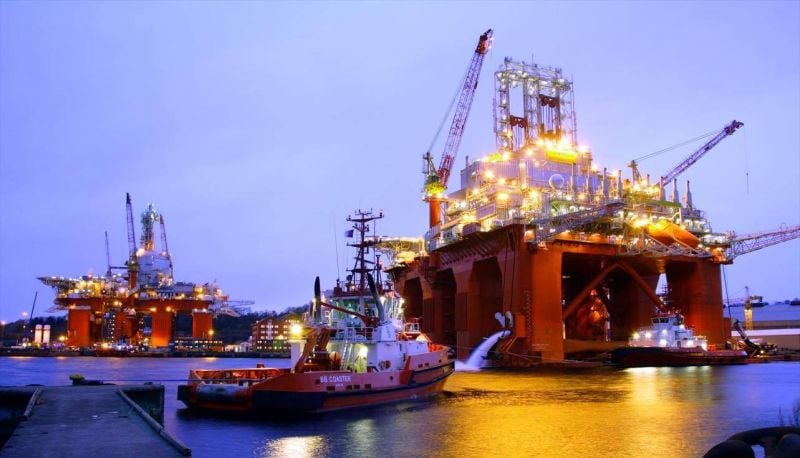
The TransOcean Barents drilling rig. (Credit: AR/Marinetraffic)
Nine months after the demarcation of Lebanon’s southern maritime border with Israel, a ship with the TotalEnergies/Eni/QatarEnergy consortium arrived on Wednesday, the 16th of August to Lebanon to begin exploration in Bloc 9 to determine the presence of hydrocarbons. What does that mean for Lebanon? L'Orient Today asked two experts.
BEIRUT — The TransOcean Barents drilling rig is sailing toward Lebanon.
"This important step sets the ground for the start of the drilling operations in Block 9 offshore,” TotalEnergies regional manager Romain de La Martinière announced last weekend on social media.

What will the ship do once it arrives?
“The ship is expected to arrive on the night of Aug. 14,” a source at the Lebanese Petroleum Administration told L’Orient Today. “[It] will need to prepare for 10 days before it can start drilling for an exploration well in Bloc 9.”
Chartered by TotalEnergies on behalf of the consortium it formed with Italy's ENI and QatarEnergy, the TransOcean Barents platform will drill an exploration well in Bloc 9 of the Exclusive Economic Zone (EEZ), the second bloc off the Lebanese coast near Sour, South Lebanon.
“The process will take around two months before it’s clear whether Lebanon can start extracting and producing natural gas from the bloc,” the source added. “If this is the case, the consortium will take its work to the next level and Lebanon will officially become an oil-producing country.”
How was the specific spot in Bloc 9 selected for drilling?
“TotalEnergies and their consortium have had the needed data for drilling for the past ten years," Marc Ayoub, an energy researcher and associate fellow at the AUB Issam Fares Institute, told L’Orient Today.
"The data is based on 3D and 2D images, a geological survey and mapping of the area, and a study of Lebanon’s new maritime border," Ayoub explained. "The drilling spot was essentially picked based on this data, but the 2020 drilling in block 4 also helped TotalEnergies to understand the geology of the area."
The actual drilling location is different than one TotalEnergies picked previously, which was located 25 km North of disputed Line 23.
In October, Lebanon and Israel concluded a deal delimiting their maritime border, which ensures the distribution of valuable offshore gas fields in the eastern Mediterranean. The agreement put an end to a dispute that had lasted since the late 2000s.
As part of this deal, Lebanon gave up its claim to Line 29, which included an additional 1,430 square kilometers and part of the Karish field, which is known to be rich in hydrocarbons.
On the other hand, it obtained the whole of the area delimited by Line 23, and all the exploitation rights of the still-unexplored Qana field.
"When the agreement was made, the well became closer to Line 23 than it was before," noted Ayoub.
He explained that the works are intended to start “a few kilometers from the Karish field, where production has been going for months now” on the Israeli side.
Do we actually expect to find gas in Bloc 9?
Ayoub said the Lebanese need to manage their expectations.
“Our experience tells us that, in one out of the four oil exploration projects, hydrocarbons are found, and so we need to be prepared,” he said.
“There is a 75 percent chance that they will not actually find any gas” Ayoub concluded.